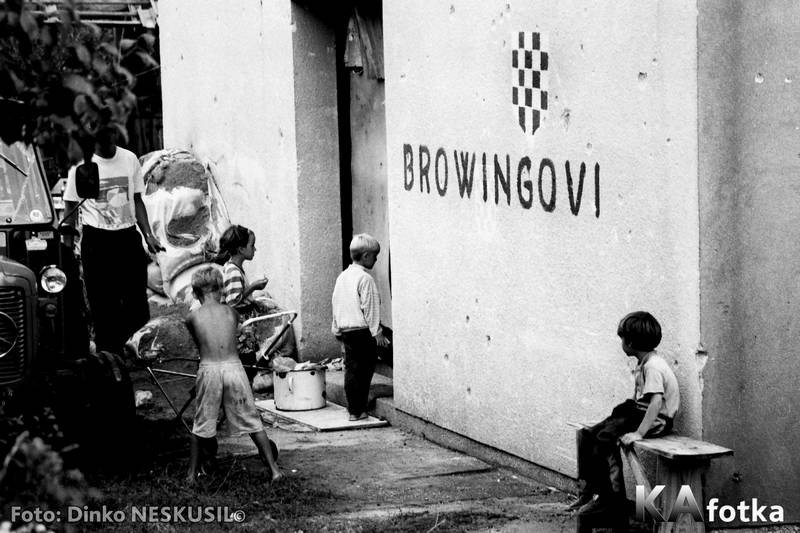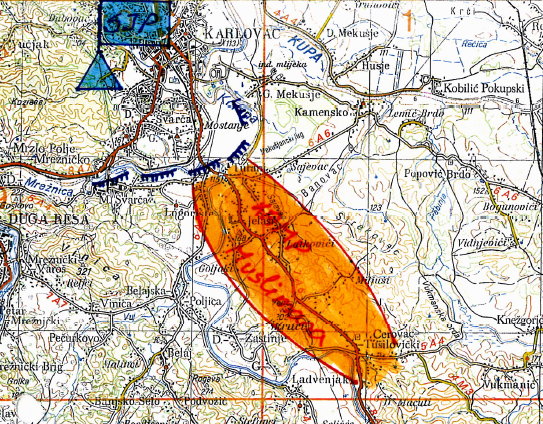In August 1994, a large number of Muslim refugees from western Bosnia arrived in Turanj, a southern suburb of the town of Karlovac. They sought safety in Croatia first but many moved further into western Europe.
In September of 1993, Bosnian businessman and politician Fikret Abdić established power in the Cazin region and founded Autonomous Province of Western Bosnia (APWB). Immediately after declaring its autonomy, Abdić came into conflict with the official Army of Bosnia and Herzegovina (BiH) and then formed an alliance with the Serbs. The 5th Corps of the Army of BiH occupied Velika Kladuša, the capital of the APWB on 21 August 1994 and found that several thousand people fled to the occupied territory of the Republic of Croatia the previous day.

One of the places the refugees were stopped was the from Tušilović to Turanj where they created a convoy that stretched roughly 15 kilometres. Although the United Nations Protection Force (UNPROFOR) allowed them to pass through to the unoccupied parts of Croatia, personnel from the Croatian Ministry of the Interior halted the refugee convoy. In Turanj, refugees entered demolished houses, a school and even a local ambulance. Others created improvised dwellings along the road where they sheltered children and women from the rain. Croatian assistance to refugees was based upon humanitarian grounds and entry into the unoccupied territory of the Republic of Croatia was limited to the Karlovac hospital and only for emergencies. Upon completion of treatment, they were returned to refugee areas.

There were significant numbers of enemy forces among the many civilians and the Croatian army and police subsequently found themselves in an extremely unfavorable situation. As a result, Chief of the Special Police Sector Željko Sačić issued an order the day of the refugee wave, 25 August, that sent Special Police Units to Karlovac and ATU Lučko as reinforcements for domestic troops, primarily the 110th Brigade of the Croatian Army.

Croatian forces thus defended Karlovac in the operation whose code name was “Tuka”. The threat lasted until the end of 1994 when the less than 1,000 refugees who remained in Turanj did not return to Bosnia or managed to get to third countries, primarily Austria and Germany.
Cover photo
Special Police Unit “Alfa” Zagreb
Sources
Marinić, Borna. Specijalna jedinica policije “OSA” u Domovinskom ratu. Sisak: Udruga SJP OSA, 2018.
Pulez, Željka. Jedno srce za slobodu. Karlovac: Tiskara Pečarić & Radočaj, 1997.
Monografija Stodeseta brigada ZNG – HV u obrani jedne domovine II dio (od 1. siječnja 1993. do 30. lipnja 1996.). Karlovac: Udruga pripadnika 110. brigade ZNG-HV Karlovac, 2009.
Graduated with a Master’s Degree in History from the University of Zagreb. He has worked at the Croatian History Museum and as a researcher for the popular TV Calendar program for Croatian Radio and Television. He has authored several books and documentaries about Croatia’s Homeland War and is the creator/producer of the immensely popular “It Happened on this Day – Homeland War” Facebook page as well as the online portal Domovinskirat.hr. Borna also is the host and editor of the daily segment “Patriotic Minutes” on Croatian Catholic Radio. He created CroHis to promote the values of the Homeland War and ensure that the sacrifices of those who defended Croatia’s independence would not be forgotten.

